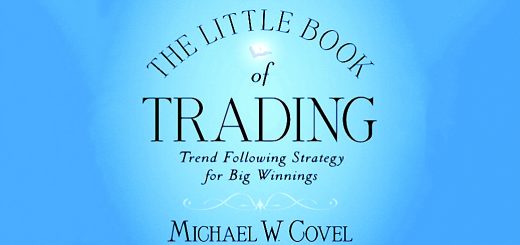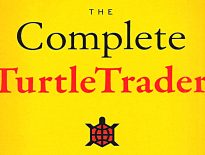The Turtle Traders #6

Today’s post is our sixth look at the Turtle Traders, and our fourth visit to Michael Covel’s book on the subject.
Contents
After Dennis
In our last visit to Covel’s book, we reached the end of the experiment. Today we look at what happened to the Turtles after Dennis was out of the picture.
Just because Dennis pulled the plug on the Turtle program didn’t mean his students were headed back to obscurity. Instead, they became Wall Street’s newest rock stars.
The Turtles as a group, along with Michael O’Brien, who had long raised client money for Dennis to trade, saw an opportunity in the whole being greater than the sum of its parts.
The Turtles were going to use O’Brien as a broker to set up a Turtle fund. They met to discuss trading as a group, but could not agree on the split. Jerry Parker went back to Virginia to start figuring out a trading business on his own.
Most of the Turtles filed with the government to trade for clients. Curtis Faith said that he was now retired at twenty-three.”
Less risk
Jerry Parker was the first Turtle who figured out the importance of using less leverage to appeal to investors: “The bigger the trade the greater the returns and the greater the draw- downs. It’s a double-edged sword.”
As Paul Tudor Jones said:
What’s different has been my own personal appetite for risk and volatility. I think that probably happens with a lot of people, as they get older. Everything is a function of leverage, how much of a draw down are you willing to tolerate.
Parker continues:
I lost 60% in one day, although we were still up 140% at the end of the day. I was sure it was not a good idea to lose 60% in one day. Using a ton of leverage was the reason for huge swings in the Turtles’ performance.
So I compromised on my risk, traded smaller, and tried for 20% a year. If you’re going to raise a lot of money, people will be very happy with 15% or 20%.
Not all clients always want the early Turtle- trading absolute returns, the big home runs. In general, high returns do not attract as much money from investors as lower- volatility trading (which means less return). The industry simply did not want Richard Dennis type volatility.
Sticking to their knitting
But by cutting their appetite for risk in year one, the Turtles left little or no cushion if their next year’s performance bombed.
Tom Shanks did not pull back from the original aggressive Turtle rules: “There are individual investors who seek high returns and are willing to accept the risk entailed in achieving them.”
Shanks also declared that he was trading only 75% “black box” (system) and 25% discretionary (manual override).
Liz Cheval had a similar approach, but in the end the market of long-term institutional investors favoured Parker’s lower-risk style.
Dennis comes back
Dennis was envious of his pupils’ success.
How in the world could a methodology that you created with your own knowledge out- trade you?
Some observers – like Jeff Gordon – were not sympathetic:
If Richard Dennis had hung up his cleats and just allowed the Turtle program to manage all that money he got from Drexel, he could be sitting on easy street.
We will never know how many hundreds of millions and perhaps how many billions of dollars he might have left on the table because he disbanded the Turtle group.
In 1994 Dennis launched Dennis Trading Group with his brother Tom.
He called himself a researcher, and sought to draw a line under the past:
The people I trained are succeeding on the ideas they learned from me. People might be interested in getting some updated ideas. If yesterday’s motto was that the trend is our friend, today it might be that the trend is a harsh mistress.
Russell Sands
It was at this point that Russell Sands – who left the programme early – started selling the Turtle rules.
- He had started Chesapeake Capital with Jerry Parker, but left the firm after a few years, with Parker buying him out.
Sands set up seminars at $2.5K a pop.
The other Turtles started to downplay the importance of the rules, but that seems like a smokescreen to me.
- They also said he left too early to learn the rules properly, but he then spent years working closely with Parker.
Dennis quits again
After returning in 1994, [Dennis’] compounded annual rate of return was approximately plus 63% through September 1998.
He was also clear that he was no longer using “discretion”:
Given what the computer can do today compared with what it could do only a few years ago, I just can’t see how any human could possibly compete on a level field with a well- designed computerized set of systems.
But on September 29, 2000, Dennis Trading Group ceased trading.
Burt Kozloff explained:
Dennis Trading Group was -50% down in June. We finally broke through the – 50% mark to -52%. There’s no turning back from there.
Of course, Dennis’ clients had panicked at the bottom:
In the following twelve months, returns for many of his trading peers zoomed up 100% or more.
Parker
Chapter 13 of Covel’s book is largely a profile of Jerry Parker, the Turtle who has gone on to the most subsequent success.
- At the time of Covel’s book, Parker was close to being a billionaire.
Since Parker stuck pretty closely to Dennis’ approach, we don’t learn much that is new about trend following.
Those years under Dennis were central to his development. The confidence he gained while trading for Dennis was his biggest lesson: “The most important experience that led me to utilize a technical approach was the amount of success that I experienced trading Rich’s system. “
What was the critical experience he gained under Dennis? “It’s important to live with someone who says, ˜It’s okay to lose money.’”
What separated Parker from the other Turtles?
Nancy Upton and Don Sexton, professors at Baylor University who have long studied entrepreneurs, pinpointed traits possessed by Parker and other entrepreneurs:
- Nonconformists – lower need to conform indicating self- reliance.
- Emotionally aloof – not necessarily cold to others, but can be oblivious.
- Sky-divers – lower concern for physical harm, but does change with age.
- Risk takers – more comfortable taking it.
- Socially adroit – more persuasive.
- Autonomous – higher need for independence.
- Change seekers – like novel approaches (99% of people don’t).
- Energetic – higher need and / or ability to work longer.
- Self- sufficient – don’t need as much sympathy or reassurance (but they still need to form networks so self-sufficiency need not be taken to extremes).
Parker always brought it back to his training under Dennis: “An honest, humble mentor is the best thing going. Learn from other people. Do the right thing every day, focus on what you’re doing, and let the cards fall where they may.”
Trend following is like a democracy. Sometimes it doesn’t look so good, but it’s better than anything else out there. Are we going to rely on buy and hold? Buy and hope, that’s what I call it. Are we going to double up when we lose money?
The world is too big to analyze. The fundamentals are too large. We need to aggressively, unrepentantly sell trend following and describe it as it is: a system of risk controls that gets in the right markets at the right times and limits the disaster scenarios.
Mean reversion
Over the long haul, market prices have a tendency to revert to the mean. Studies have conclusively shown that when stock prices get over-extended to the upside (or to the downside), they eventually fall back in line with averages.
However, stock prices do not exactly snap back into place overnight. They can remain overvalued or undervalued for extended periods of time. That extended period of time is the sandbar that sinks ships.
As Parker puts it:
Mean reversion works almost all of the time. Then it stops and you’re kind of out of business. The market is always reverting to the mean except when it doesn’t.
Who wants a system like we have, 40% winners, losing money almost all the time, always in a draw down, making money on about 10% of your trades, the rest of them are sort of break even to losers, infrequent profits?
I much prefer the mean reversion where I have 55% winners, 1% or 2% returns per month. I’m always right! Then, maybe in 8 years, you’re kind of out of business.
Conclusions
It’s been another interesting read, but we haven’t learned anything new about trend following today.
- And we really only looked at two or three of the Turtles in any detail.
I’ll be back in a couple of weeks with the final section of Covel’s book.
Until next time.
















